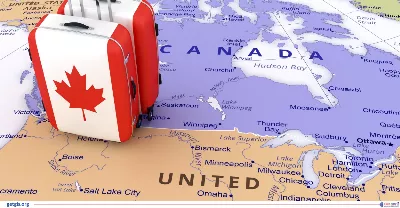Canada Immigration Levels Plan 2026-28 Coming in November 2025; Targets Likely to Rise
Updated On
-
Copy link
The wait is finally over! Canada’s Immigration Levels Plan 2026-28 is set to be announced in November 2025. Scroll through and find what are the current immigration targets, what the future holds and more.
The most-awaited Canada’s immigration levels plan for November 2025 is here. The focus of this year’s plan is to work on the future with the country’s population growth, uplifting the labour market, and find a demographic balance.
So far, the federal government has completed wide consultations with provinces, employers, immigrant-serving organizations, and the public to shape the multi-year immigration plan for 2026 to 2028.
Now, Canadian Citizens are waiting for the 2026–2028 immigration plan announcement by the Immigration, Refugees and Citizenship Canada (IRCC) to be revealed by November 2025.
What are Canada’s Current Immigration Targets?
Back in November 2024, the federal government announced the 2024–2026 Immigration Levels Plan, the plan established the target for new permanent residents in 2025 at 395,000. However, following requests from several provinces, additional allocations were granted through the Provincial Nominee Program (PNP), increasing the effective target for 2025 to 401,418.
The extra allocations for 2025 are distributed as follows:
- British Columbia received an additional 1,254 permanent resident spots,
- Alberta got 1,528 more,
- Saskatchewan was allocated 1,136 additional spots,
- Newfoundland and Labrador received 1,000 extra places,
- New Brunswick obtained 1,500 new spots.
While the base number stood at 395,000, these extra allocations brought the total to 401,418 permanent residents for 2025. Of that total, 8.5%, or approximately 29,325 spots, are reserved for Francophone immigrants outside Quebec. The remaining numbers are divided among economic, family, humanitarian, and other classes, according to the proportions outlined in the plan.
Also Read: Canada’s IRCC Announces Which PR Applications It Will Process in 2025
Key Drivers Behind the Expected Increase in Immigration Levels
The key factors that are driving this expected increase are:
- Canada’s low fertility rate and weak natural population growth make immigration important for sustaining population numbers and economic momentum.
- An aging population directly increase the dependency of younger workers and immigrants to support social systems like pensions and healthcare.
- Chronic labor shortages in healthcare, construction, skilled trades, technology, and agriculture sectors demand more immigrants.
- Provinces seek greater control over immigration to tailor it to regional workforce needs, making it politically advantageous for Ottawa to raise targets.
- The government aims to facilitate smoother transitions from temporary status (students, workers) to permanent residency, relieving growing demand pressures.
Timeline of Current Immigration Targets
To get a clear picture of where Canada came from and where it may go, here is a corrected timeline:
|
Year |
Base/Announced Target |
Adjusted or Expected Target |
Francophone Share (outside Quebec) |
Comments |
|
2024 |
485,000 |
485,000 |
~26,100 |
High-growth baseline year |
|
2025 |
395,000 |
401,418 |
29,325 (8.5%) |
Provincial boosts applied |
|
2026 |
380,000 |
~386,418 (but possibly 410,000+) |
31,350 (9.5%) |
Likely upward revision |
|
2027 |
365,000 |
TBD (possibly >400,000) |
31,500 (10%) |
Subject to new plan announcement |
Also Read: IRCC Conducts Major Express Entry Draw Inviting 4,500 French-Speaking Candidates
Changes and Priorities in the 2026–2028 Immigration Levels Plan
The upcoming 2026–2028 Immigration Levels Plan is set to not just to raise the total number of newcomers but also to adjust the mix of immigration categories. The Economic immigration will remain the priority with increased Provincial Nominee Program allocations. In return of all, family sponsorship, business, and Atlantic regional stream allocations might see some reductions, reflecting changing priorities and resource allocations.
What are Temporary Immigration Targets?
Any Canadian immigration plan is incomplete without considering temporary residents—international students, temporary foreign workers (TFWs), and others.
Beginning from 2024-25, the federal government began setting explicit targets for new temporary residents (students and workers), integrating them more tightly into overall migration planning.
Temporary Targets
Year | New Temporary Residents (Work + Study) |
2025 | 673,650 |
2026 | 516,600 |
2027 | 543,600 |
What to Look for in November 2025?
The November 2025 plan is about to be announced by IRCC. Here’s an easy-to-understand forecast of what to expect from Canada’s 2026–2028 Immigration Levels
The Plan:
- The permanent resident target for 2026 won’t stick to the originally planned 380,000. Instead, it is expected to be nudged upwards to about 386,418, and may even reach closer to 410,000 to 415,000, reflecting ongoing pressure from provinces and the need to fill labour market gaps.
- Francophone immigration outside Quebec is set to continue growing as well, with the share rising to 9.5% in 2026 on the way to a target of 12% by 2029. This demonstrates Canada’s commitment to supporting French-speaking communities outside Quebec.
- Another key change will be an increase in the share of newcomers admitted through Provincial Nominee Programs (PNPs), giving provinces more say in selecting immigrants to better match their regional labour needs.
- To balance this, national quotas for business immigrants, family sponsorship, and the Atlantic immigration streams are likely to be tightened. This helps prioritize economic immigration and provincial demands.
- Temporary immigration is also expected to undergo reforms. The government is likely to introduce more flexible student quotas and create stronger, clearer pathways to help international students and temporary foreign workers transition to permanent residency. There may also be some adjustments or caps introduced for temporary foreign worker (TFW) streams.
Also Read: Canada Updates Immigration Processing Times for October 2025
All in all, Canada is highly unlikely to reduce immigration. Moreover, the focus will be on raising targets in a smart, regionally responsive way that balances economic needs, demographic realities, and public concerns about infrastructure and services. The final numbers will be announced by IRCC in November 2025, but early signs strongly point to an upward revision from previous plans.
Plan Your Canadian Immigration Journey with GetGIS
For the most accurate and up-to-date assistance on Canada’s evolving immigration levels plan, visa procedures, and pathways to permanent residency, trust the expertise of GetGIS. Stay ahead with personalized advice and seamless support tailored to your immigration goals.
Book your free consultation today and take the first step toward your future in Canada with confidence.
Also Read:
- Newfoundland and Labrador Invites 217 Candidates in Latest PNP and AIP Draw
- Canada’s New Initiatives to Attract Global Talents
- British Columbia Extends 491 ITAs to Skilled Workers and Entrepreneurs
- IRCC Canada Issues 291 ITAs in Latest Express Entry PNP Draw
- Albert Issued 1,433 Invitations in the Latest PNP Draws
- First Trade-Specific Express Entry Draw of 2025 Issues 1,250 Invitation




